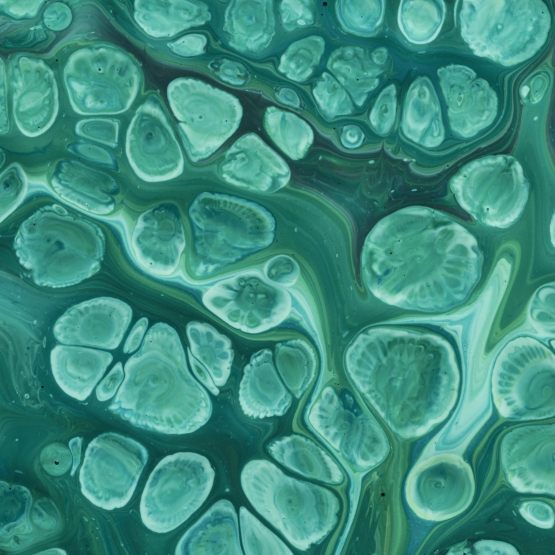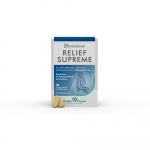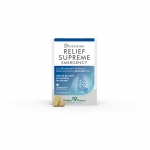Ours is a holistic approach that does not hinder the physiological processes of the body. It's an approach that encourages the restoration of balance, by combatting the causes of symptoms as efficiently as possible and ensuring fast relief.
Symptoms and relief
SELECT YOUR NEED

Osteoarticular and muscular system
INFLAMMATION AND PAIN
INFLAMMATION is an adaptive response to anything that our body perceives as potentially harmful.
Clinically, the tell-tale signs of inflammation are:
- warmth in the inflamed area
- redness
- swelling
- pain and functional impairment
These symptoms frequently affect the musculoskeletal system, thus creating localized tension in the muscles, tendons and bones.


Inflammation develops through complex biochemical processes involving the targets of inflammation, in which molecular and cellular components that are closely interconnected form part, such as:
- The arachidonic acid cascade
- ROS and RNS
- The complement system
- The endocannabinoid system
- Glucocorticoid receptors
WHAT IS PAIN?
Pain is the means by which the body signals damage to its tissues. As defined by the IASP (International Association for the Study of Pain - 2020) and the World Health Organization, pain is "an unpleasant sensory and emotional experience associated with (or similar to that associated with) potential or ongoing tissue damage."
It can be one of two types:
- Acute pain, which appears suddenly; its possible causes include an illness, trauma (e.g., an injury while playing sports) or inflammation of a tissue in the body (such as pain associated with a muscle strain). Its duration is limited in time; when the discomfort lasts for more than 12 weeks, it is classified as chronic pain.
- Chronic pain may result from an initial trauma (e.g., a fall on one's shoulder), which ends up having long-term consequences, or it may be caused by a persistent condition (e.g., chronic degenerative conditions such as arthritis).
Some types of pain:
| TYPE OF PAIN | THE MOST COMMON | SYMPTOMS |
| Acute pain |
|
|
| Chronic pain |
|
|
WHAT IS THE DIFFERENCE BETWEEN INFLAMMATION AND PAIN?
Pain and inflammation are two different things, but they actually have many things in common. To be specific, in most cases, the pain we experience in one part of the body, whether the head (headache), a muscle (myalgia), or somewhere else, is often caused by an underlying inflammation.
A muscle is an anatomical tissue consisting of a series of bundles, that is, a set of cylindrical units which in turn are made up of the muscle cells, called muscle fibers. Each muscle fiber contains thousands of myofibrils, varying in length (up to 30 cm) and diameter, depending on the type of muscle they make up (skeletal muscles, myocardial striated muscles, smooth muscles). According to their physiological characteristics and anatomical function, we can distinguish them into slow and fatigue-resistant fibers, fast and fatigue-resistant fibers, fast fibers with low fatigue resistance, and intermediate fibers.
Each muscle is adapted to perform a certain function based on the speed of contraction, endurance and fatigue resistance.
Muscle tears occur when, as a result of an incorrect, abrupt or too-sudden movement, the fibers that make up the muscle bundles are ruptured. These are especially common among sportsmen, in cases when, either due to a lack of training or absent or inadequate warming up before physical activity, the muscle remains "cold," that is, not ready and unprepared to carry out the required movements and handle fatigue and exertion.
Depending on the number of fibers that are damaged, muscle tears can be classified as follows:
- grade 1 tear: (muscle distress): a limited number of fibers are damaged (less than 5 percent of the total) and there is no pain, only discomfort when contracting the affected muscle.
- grade 2 tear: the number of injured fibers is greater (whole fascicles), and a painful, sharp twinge is felt after muscle contraction; the muscle remains contracted, rigid and sore even at rest. Edema and swelling may also be observed.
- grade 3 tear: the injury involves the muscle in its entirety; it can be felt through external touch as a depression arises following the retraction of the two ends of the injured fibers. It likewise results in stiffness and the inability to move, edema and swelling, and pain including at rest; in addition, this being the most severe type, there may be a rupture of the dense network of capillaries that bring blood to the muscle, leading to visible blood leakage on the surface due to the formation of hematomas.
The muscles most affected are those of the limbs, particularly of the thighs - the flexors, adductors, and quadriceps; of the legs - the triceps suralis; and of the arms - the biceps and deltoid.
The predisposing factors for the occurrence of a muscle tear following movement can be: cold weather, humidity, fatigue, possible alterations in the turnover of carbon layers, sudden movements, and excessive physical effort.

